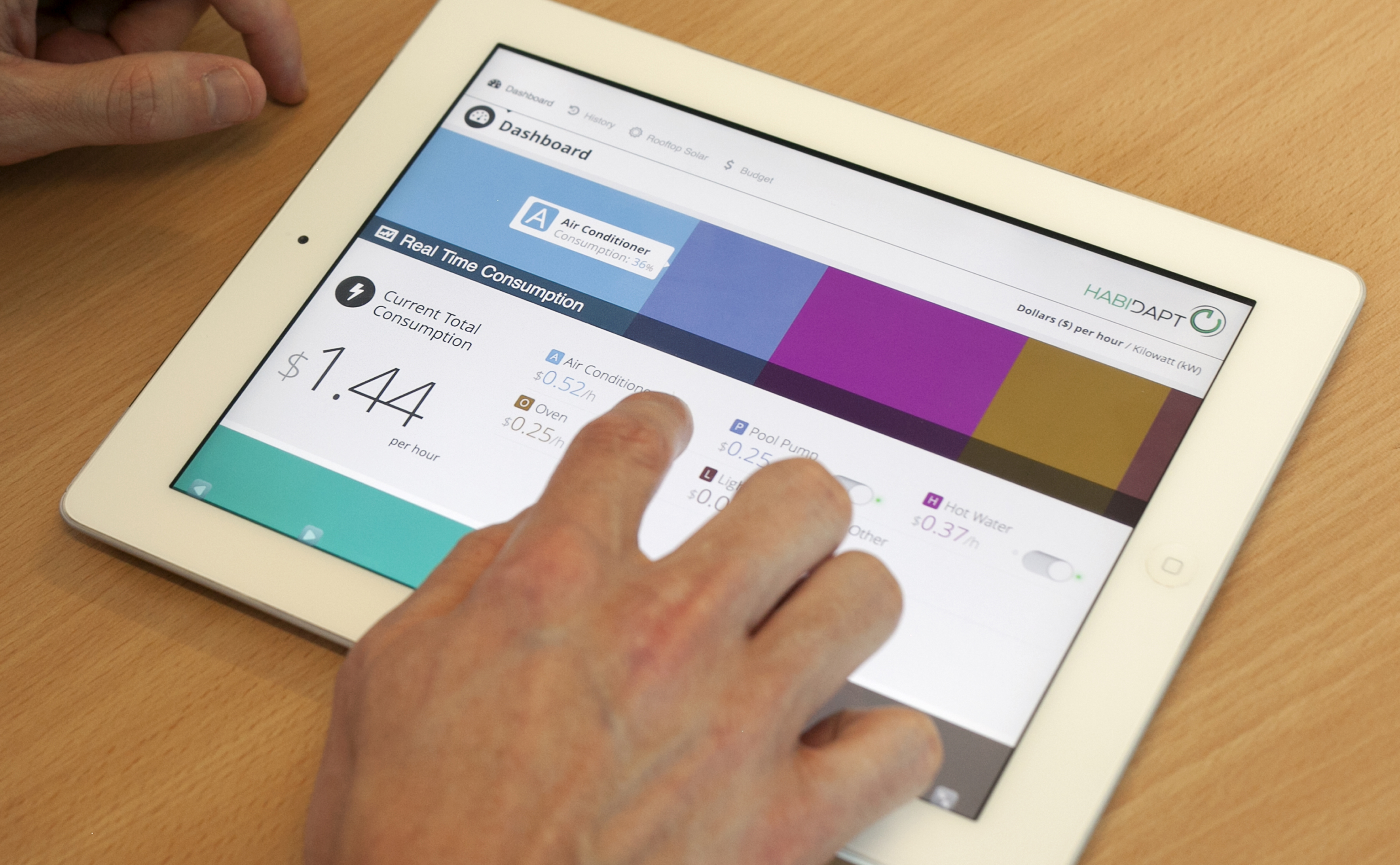Eddy gives people more control over their energy usage, helping them to save money.
Electricity prices, poles, wires, peak demand. Pick any combination of words and you’ll find a raft of news pieces, heated debates and public protests. ‘Poles and wires’ was an issue that led the NSW state election this year, and bill woes led to 58,000 properties in Victoria being disconnected in a single year.
It’s an inescapable cost for the consumer and the environment. But it’s also one that can be managed, by quite literally taking things into your own hands.
That’s why we’ve developed a new system that takes smart metering a step further, allowing consumers to monitor their electricity consumption in real-time and control high-drain devices remotely using an online interface – on a computer, smartphone or tablet.
The system, known by its friends (and the market) as “Eddy”, is being commercialised by Australian company HabiDapt. Eddy will send consumers personalised insights and recommendations about their electricity use, and take part in demand management schemes with incentivised pricing for additional savings. Think of Eddy as your own efficient energy consultant.
This is a terrific example of the Internet of Things (IoT) – where real world items are made smarter by connecting to the internet – sadly not all IoT ideas are a winner: Wi-Fi diapers anyone?
We think Eddy is one of the more grounded systems to come out of the IoT trend. Using cloud-based software and mini smart meters, Eddy allows you to control your appliances remotely. You could even automate the process using the online interface.
The technology is based on our sophisticated Energy Management System, which has also been adapted for use on King Island’s Smart Grid.
The research group behind the electricity management system was led by Brad Sparkes (nominative determinism anyone?), who points out that houses with solar PV installations stand to gain even more, as Eddy can be programmed to prioritise running high-drain devices like pool pumps when the house is generating excess power. If the sun doesn’t shine for a few days, the pool won’t go stagnant, as the system is smart enough to recognise when to use grid power instead.
HabiDapt is currently trialling the technology in homes with solar PV systems in Perth, and is also rolling the system out with Ergon Energy in Townsville, where it is being offered to customers as ‘HomeSmart’.
While Eddy isn’t available to all our readers during the trial phase, we thought we would share some of our favourite energy savings tips:
- Use the Green Savings calculator to make your house greener. Use the tool to identify a variety of ways to save on energy and water costs plus a whole lot more.
- Use the cold cycle in your washing machine. Heating water during a washing cycle accounts for 90% of the energy use of the appliance.
- Be smart about using your dishwasher. Run the dishwasher during off-peak times (often overnight). Ensure that it is full and the dishes are stacked efficiently.
- Try not to use the dryer. Opt for a clothes airer or clothesline.
- Ditch the beer fridge. Sacrilege I hear you scream! But it will save you a heap of money.
Let us know your favourite power-saving tips in the comments section below. If you would like to find out more about Eddy, visit Habidapt’s website. To learn more about our work in energy, head to our website.



30th April 2017 at 9:55 pm
I have purchased a couple of sonoff pow switch/controller/power monitor. They work well so is this the same thing. A meter on each appliance. I would need about 20 of them to cover all used power points.
2nd June 2015 at 4:23 pm
Good idea but many households don’t have always on wifi internet. In Victoria, can it use the comms built into the 2.8 million smart meters as an alternative?
6th June 2015 at 10:18 am
Yes, Michael, on reflection, I realise that consumer access to tariff changes, either via the smart meter or via communications between the three commercial entities running the grid, will not happen. However, a fellow electronics enthusiast in UK noticed that his works tea urn would cycle between simmer and a furious boil from 7AM to morning tea break. Reasoning that heat loss was an exponential function of temperature, he fitted a solid state thermal switch and micro-computer programmed to bring the urn to first boil just in time for the 10AM demand. A useful effort. (And justification for choosing time-of-use tariff for a smart storage HWS.) Always provided that it is the consumer, not the seller, who controls the computer
2nd June 2015 at 4:06 pm
For those retail consumers who have opted for a “time-of-use” electric power tariff, EDDY like other smart devices, is handicapped by the reluctance of distributers/billing authorities to notify consumers in advance of sporadic short duration tariff changes triggered by peaks and troughs in the supply network.
My distributer now decides timings for my nightly “hot water” reduced tariff thereby preventing my smart device from programming the HWS thermostat for minimal heat loss over a 24 hour day.
31st May 2015 at 10:03 am
The idea is great. Is it any different to Neurio?
30th May 2015 at 4:52 pm
We don’t have a smart meter, but I record and graph our home electricity, gas & water usage. I also compare the numbers with the weather data, which helps when understanding high or low usage, and ways to reduce usage.